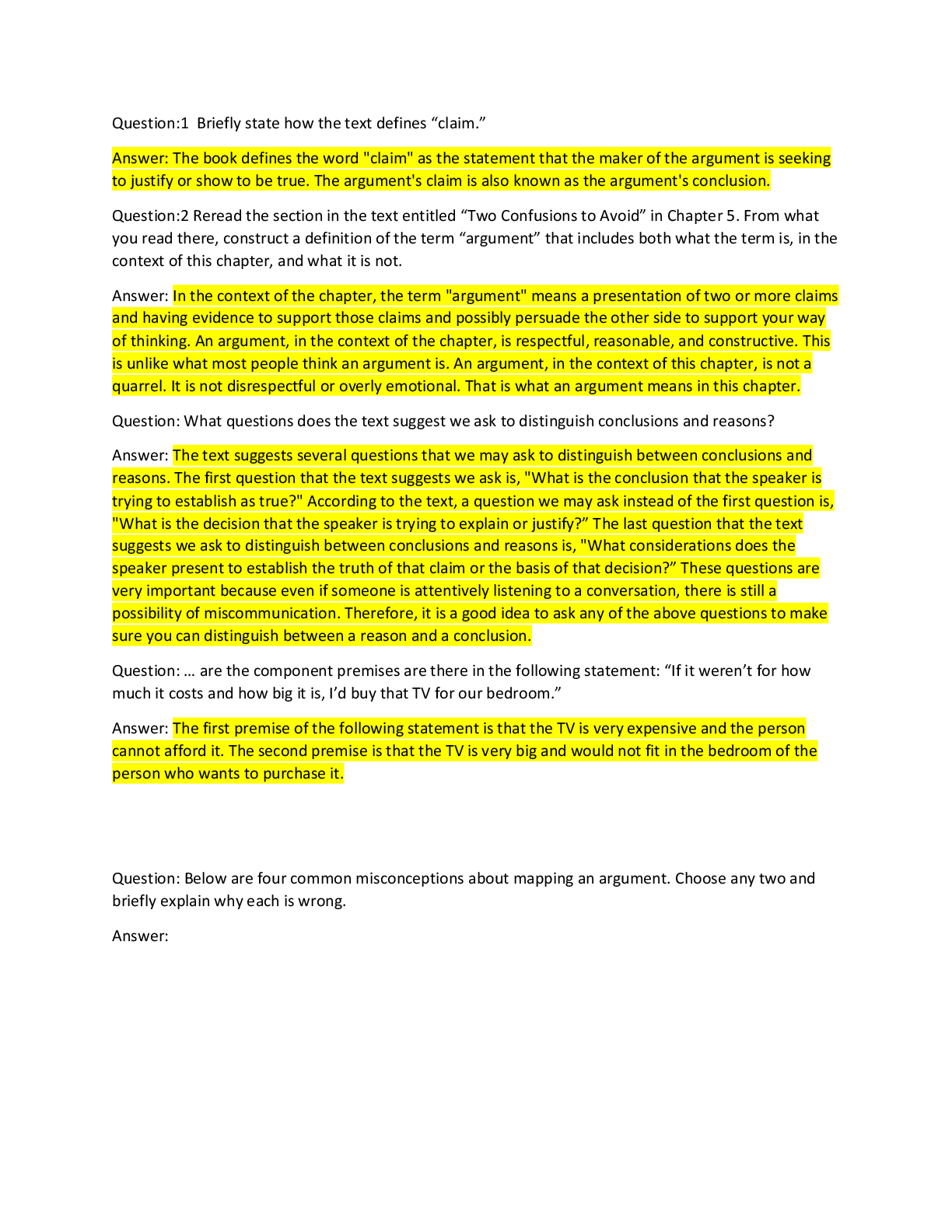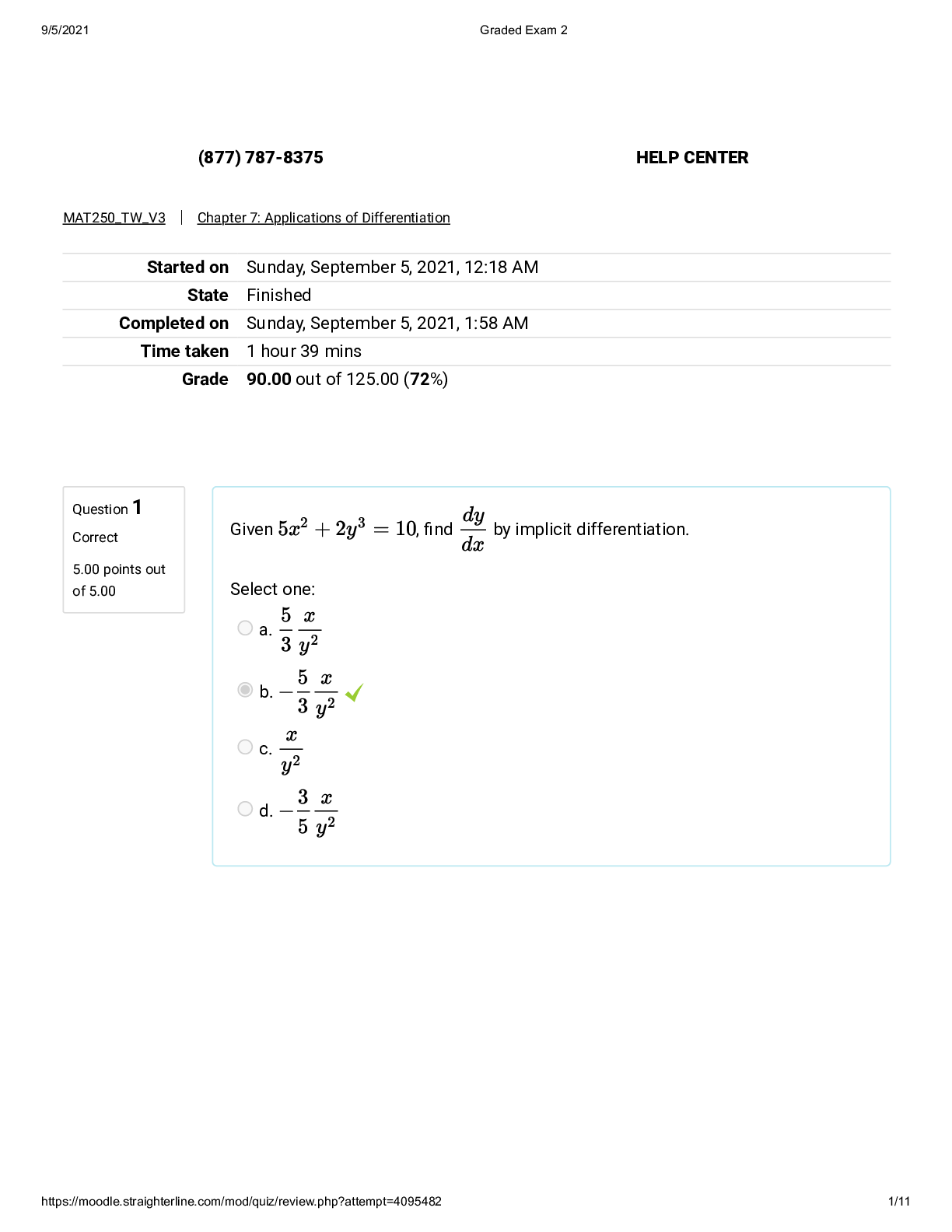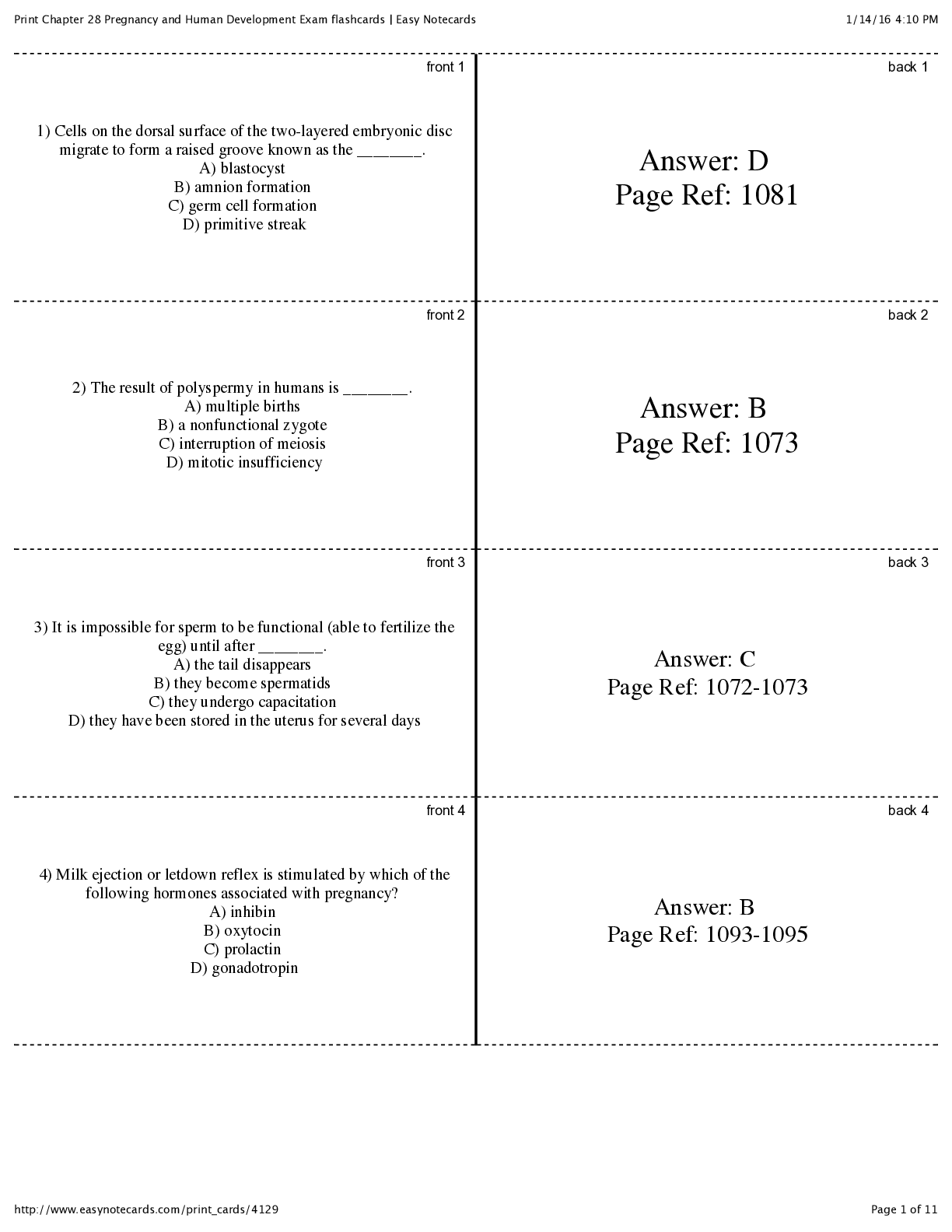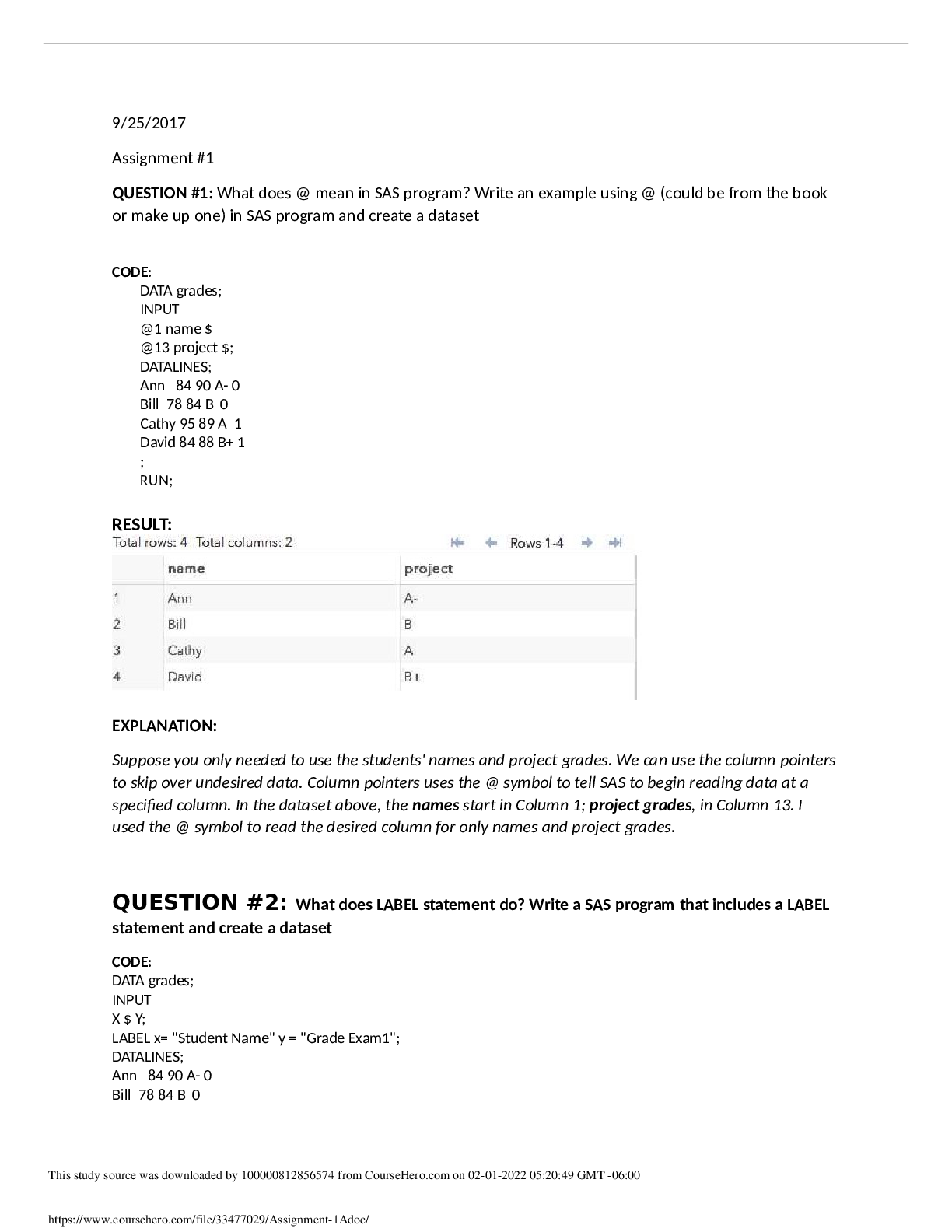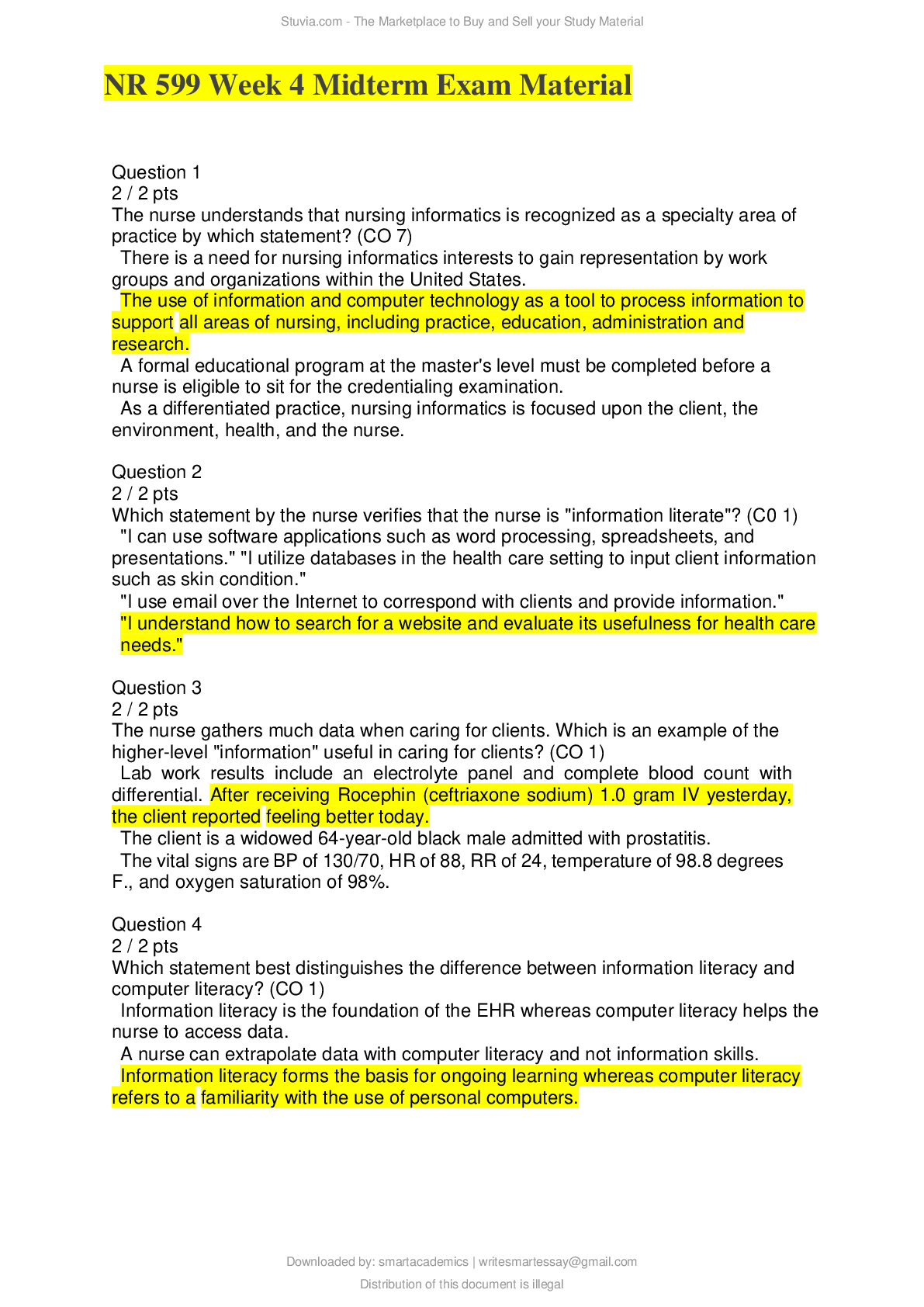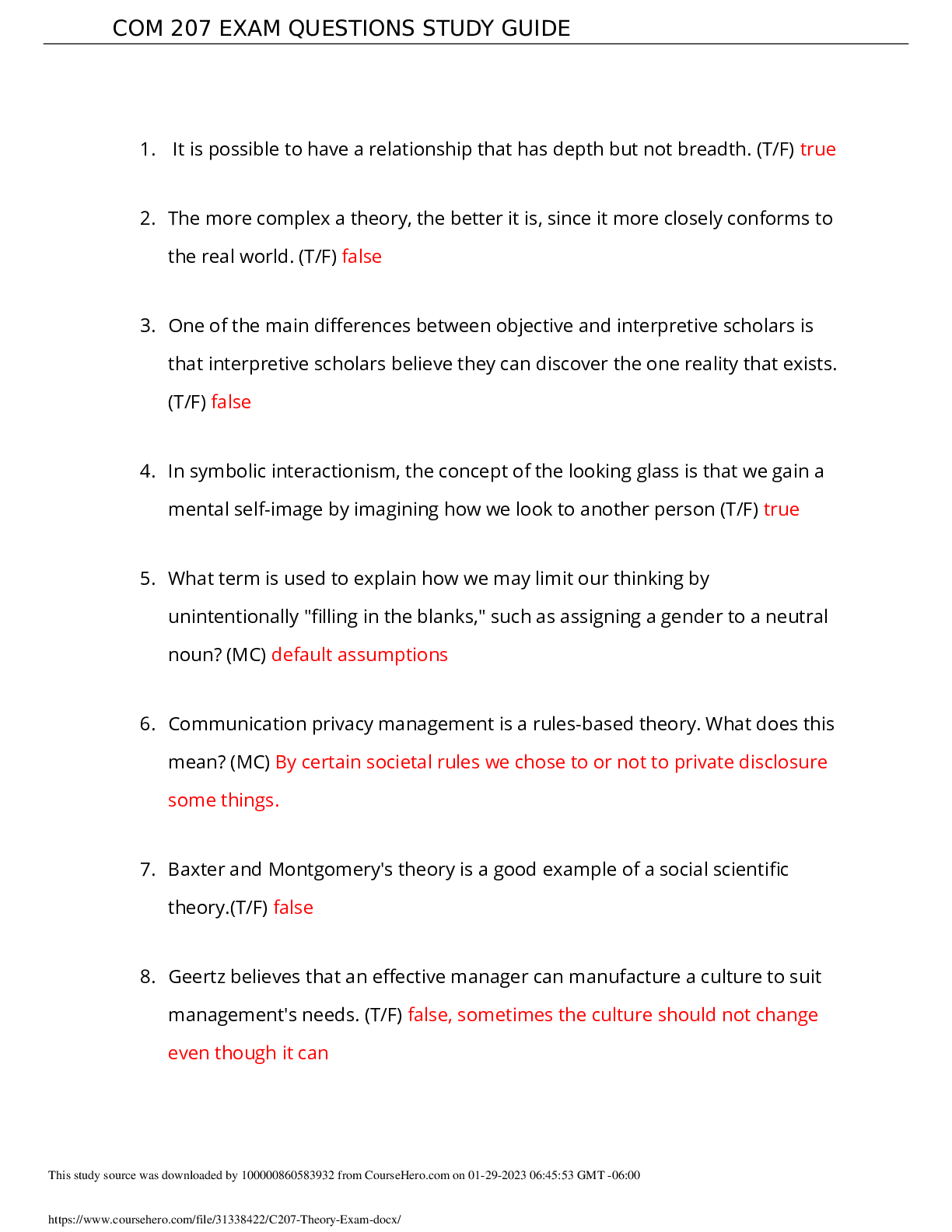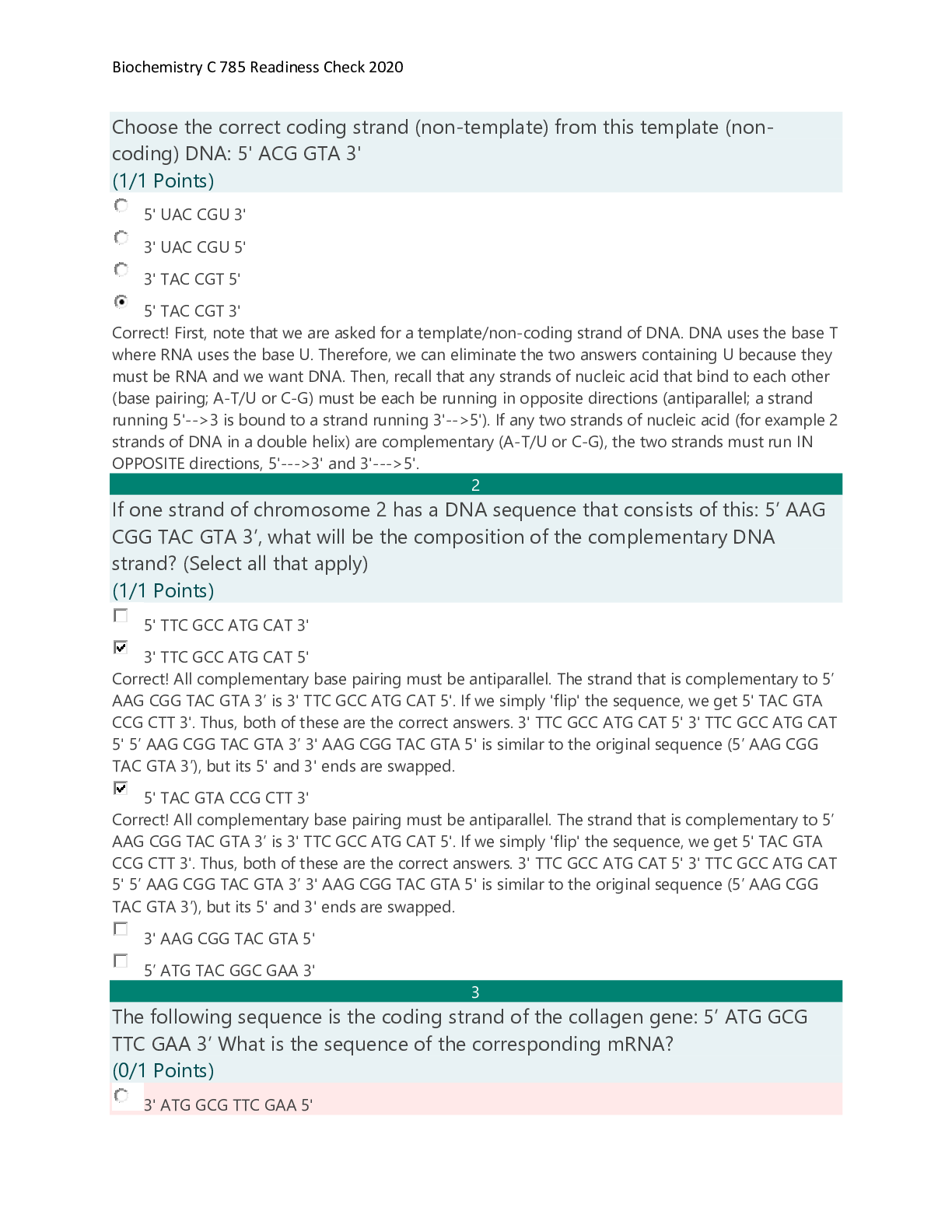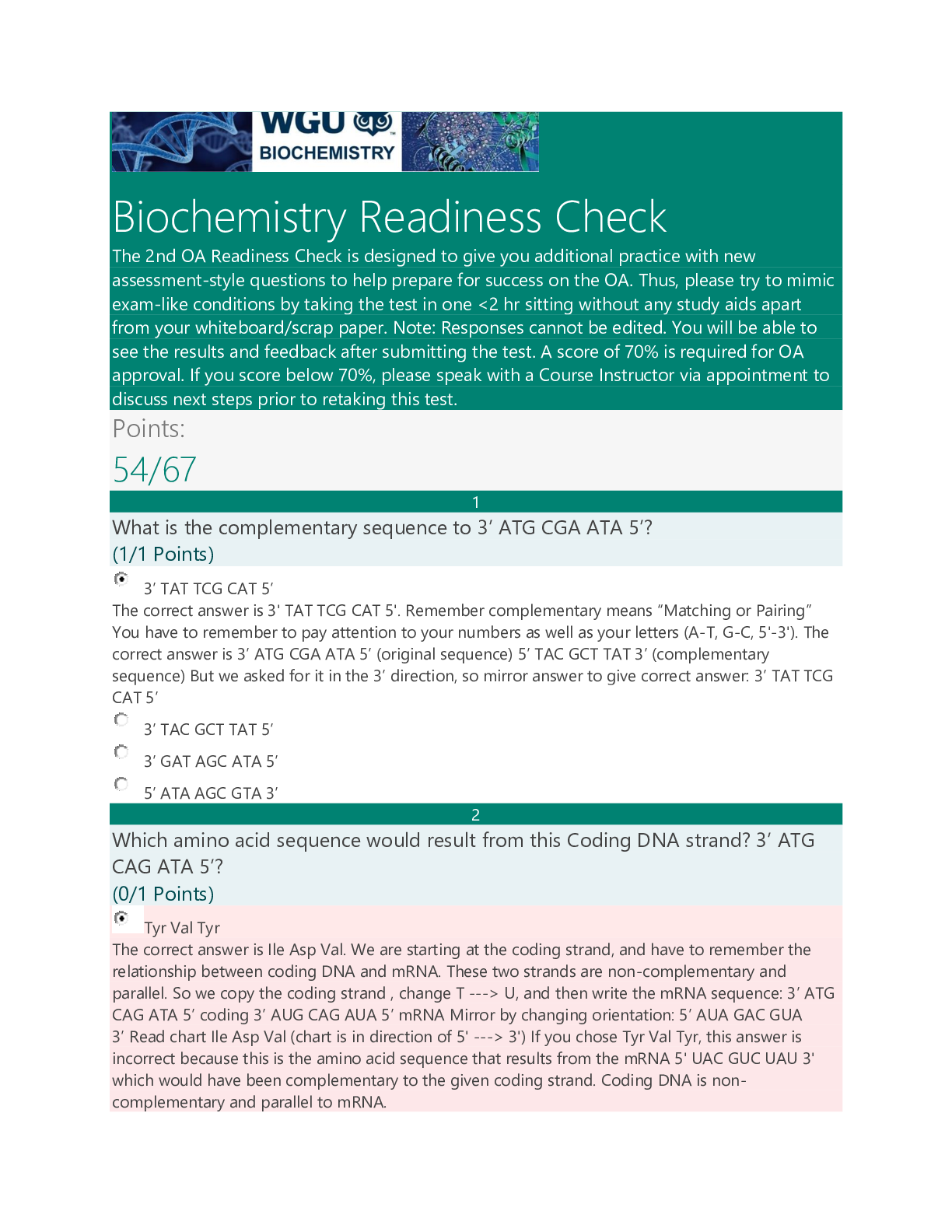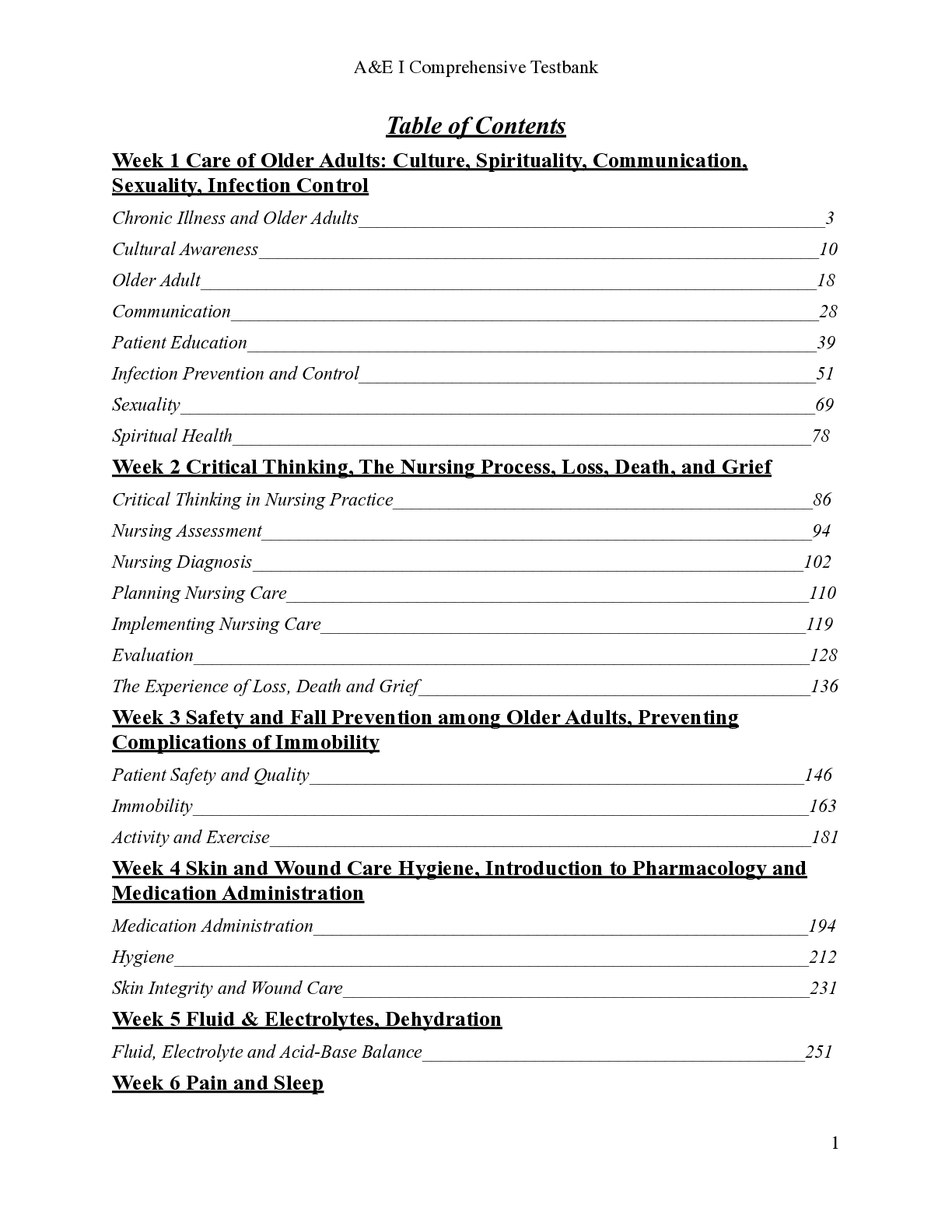*NURSING > EXAM > NUR 321 VCE #5 Fluid and Electrolyte Balance QUESTIONS AND ANSWERS 100% CORRECT BEST STUDY GUIDE (All)
NUR 321 VCE #5 Fluid and Electrolyte Balance QUESTIONS AND ANSWERS 100% CORRECT BEST STUDY GUIDE
Document Content and Description Below
Identify the three processes at play in fluid homeostasis. 1. fluid intake and absorption 2. fluid distribution 3. fluid output 2. A nurse is reviewing the results of a patient's electrolyte panel... . The documentation indicates the patient's potassium level is 5.2 mEq/L, a level that is indicative of: A. hypopotassium. B. hyperkalemia. C. hypernatremia. D. hypercalcemia. Indicate whether the following statement is true or false. 3. When the nurse is providing fluid maintenance to an adult, the use of a peripheral 18-gauge cannula is appropriate. FALSE 4. Which of the following patient populations are at an increased risk for developing fluid, electrolyte, and acid-base imbalances? Select all that apply. A. Older adults NUR 321 VCE #5: Fluid and Electrolyte Balance B. Infants C. Males D. Patients with burn injuries E. Patients using oral contraceptives Exercise 2 Online This exercise will take approximately 30 minutes to complete. Sign in to work at Pacific View Regional Hospital on the Medical-Surgical Floor for Period of Care 1. (Note: If you are already in the virtual hospital from a previous exercise, click on Leave the Floor and then on Restart the Program to get to the signin window.) From the Patient List, select Piya Jordan (Room 403). Click on Get Report; read the report and then click on Go to Nurses' Station. Click on Chart and then on 403. Click on and then review the Nursing Admission. 5. Identify three factors in Piya Jordan's Nursing Admission data that indicate a risk for fluid and electrolyte imbalances even before surgery. 1. Vomiting according to chart records 2. Excessive diuretic intake of tea and water 3. Soft “ribbony” stools. Blood noted in stool 6. Consider the data you received from the change-of-shift report. From the following list, identify the risks Piya Jordan has for fluid and electrolyte imbalance during the postoperative period. Select all that apply. A. Taking digoxin at home B. Nasogastric (NG) tube draining a moderate amount of brown fluid C. IV infusion of D5NS with 20 mEq KCl D. Receiving meperidine via patient-controlled analgesia (PCA) E. Nothing by mouth (NPO) status F. Telemetry shows atrial fibrillation Click on Laboratory Reports and review findings. 7. Using the chart below, record Piya Jordan's chemistry results. In the last column, indicate whether values demonstrate an abnormal or normal trend. [Show More]
Last updated: 2 years ago
Preview 1 out of 4 pages

Buy this document to get the full access instantly
Instant Download Access after purchase
Buy NowInstant download
We Accept:

Reviews( 0 )
$15.00
Can't find what you want? Try our AI powered Search
Document information
Connected school, study & course
About the document
Uploaded On
May 08, 2021
Number of pages
4
Written in
Additional information
This document has been written for:
Uploaded
May 08, 2021
Downloads
0
Views
70

.png)
